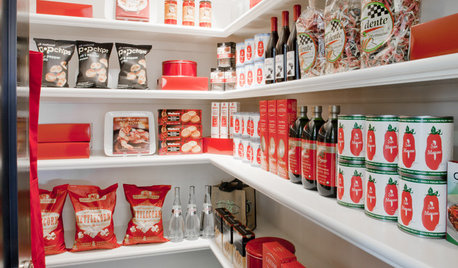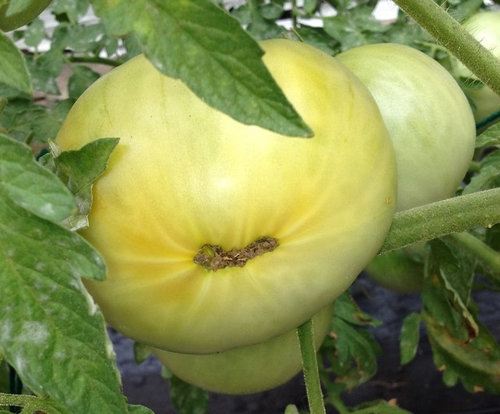Getting ready to ripen...or is it rotting?
dominickg23
9 years ago
Related Stories

GREAT HOME PROJECTSReady to Repaint Your Home’s Exterior? Get Project Details Here
Boost curb appeal and prevent underlying damage by patching and repainting your home’s outer layer
Full Story
FALL AND THANKSGIVINGGet Ready for Fall With a Touch of Nature at Your Door
Celebrate the coming season with porch decorating ideas from these 10 welcoming looks
Full Story
MOST POPULARHow to Get Rid of Those Pesky Summer Fruit Flies
Learn what fruit flies are, how to prevent them and how to get rid of them in your home
Full Story
HOUSEPLANTSHow to Grow Orchids Indoors
Orchids are the exotic aristocrats of the flower world and can make themselves comfortable in almost any home
Full Story
KITCHEN STORAGEGet It Done: How to Clean Out the Pantry
Crumbs, dust bunnies and old cocoa, beware — your pantry time is up
Full Story
GARDENING GUIDESGet on a Composting Kick (Hello, Free Fertilizer!)
Quit shelling out for pricey substitutes that aren’t even as good. Here’s how to give your soil the best while lightening your trash load
Full Story
DECORATING GUIDES15 Ways to Get Your Home in a Summer Mood
Bask in the easygoing spirit of summer with breezy touches indoors and out
Full Story
BATHROOM DESIGNShould You Get a Recessed or Wall-Mounted Medicine Cabinet?
Here’s what you need to know to pick the right bathroom medicine cabinet and get it installed
Full Story
HOUSEKEEPINGGet It Done: Clean Out the Linen Closet
Organized bliss for your bedroom sheets and bathroom towels is just a few hours away
Full Story
GARDENING AND LANDSCAPINGGet It Done: Clean and Prep the Patio
Haul out the hose and bid cobwebs farewell. It's time to renew your outdoor room for relaxing, dining and entertaining
Full Story






dominickg23Original Author
jean001a
Related Professionals
Windham Landscape Architects & Landscape Designers · Canton Landscape Contractors · Brookfield Landscape Contractors · The Woodlands Landscape Contractors · Greenfield Landscape Contractors · Hartford General Contractors · Irving General Contractors · Jackson General Contractors · Las Cruces General Contractors · Mentor General Contractors · Midlothian General Contractors · Monroe General Contractors · Northfield General Contractors · Lancaster Decks, Patios & Outdoor Enclosures · Methuen Decks, Patios & Outdoor Enclosuresdominickg23Original Author
theforgottenone1013 (SE MI zone 5b/6a)
seysonn
plaidbird
dominickg23Original Author
springtogarden
plaidbird
ddsack
green_go (Canada, Ontario, z 5a)